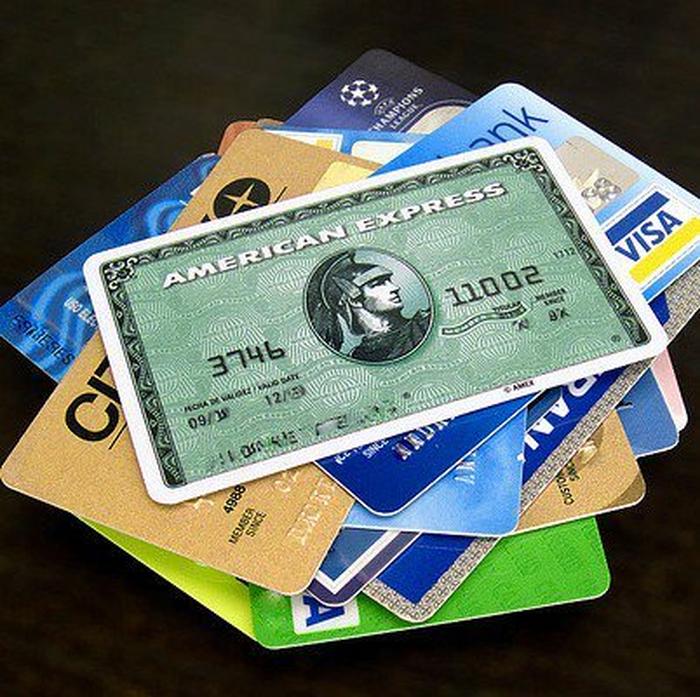
Check your mailbox. (No, your physical mailbox.) Odds are good there’s a credit card offer in there right now, or there will be soon.
With an inundation of choices and cards, it’s not always clear what every application really means. How can you tell which card is the right one for you? Consider this your credit card primer, and decide for yourself—and check out some of our favorites below.
Lingo to Look For
When you’re looking at a credit card offer, you’ll want to start by checking out the key rates and fees. Here’s a quick glossary to guide you through:
Annual Fee: This is how much you’re paying, every year, for the privilege of using a credit card (also known as participation fee or membership fee). If you plan on paying off your balance every month, look around for a card with no annual fee—there are plenty out there. Also, be mindful of “promotional” or “introductory” no-cost annual fee offers that jump up to $69 or $79 after the first year.
APR: The card’s Annual Percentage Rate, or the amount of interest you have to pay on unpaid balances. These come in several varieties: fixed, variable, penalty, and balance transfer.
Card Type: Mastercard, Visa, Discover, and American Express are the biggies. Keep this in mind if you’re applying for a credit card through your bank or through another company like Capital One or Citi.
Cash Advance Fee & APR: Your credit card should used as a debit card only in emergencies. The charge for cash advances can be exorbitant and the APR for cash advances can be twice the purchase APR—avoid getting stuck with these!
Late Payment Fee: Charged when your payment (minimum or in full) is received after the posted due date. Something to keep in mind when using on-line money transfers: a payment posted after 5 PM will likely not be credited towards your account until the following business day, so get those payments scheduled a day early if you can.
Credit Card Favorites
Whether you’re an Amazon addict or international travel junkie, many credit cards tailor their offers to be extra rewarding of certain behaviors. So what’s the best card for you? That probably depends on where you spend your spare cash (and how good your credit is). Here are some of our favorites:
Best card for online shoppers: Discover Card (any)
Their ShopDiscover program has partnered with over 175 online retailers to give customers special deals (free shipping, anyone?), plus an additional 5 - 20% cash back when you access retailer websites through the ShopDiscover page and use your Discover card.
Best “first” card for someone who maybe opened too many store accounts: Secured Capital One Mastercard
Believe it or not, just applying for those store credit cards that save you 15% on your first purchase can lower your credit rating, and signing up for several you’ve since forgotten about might disqualify you for several entry-level cards. So for those of you trying to rebuild or establish good credit, try a secured card like Capital One’s Secured Mastercard to get your foot in the credit card door. Secured cards require a deposit (based on your credit score, usually between $50-200) and come with a lower credit limit, but if you're responsible and make payments on time, your credit rating will gradually increase and you can transition to an unsecured card. You won’t get the same kind of perks, but a higher credit score will serve you better in the long run than any "cash back."
Best card for earning cash back: American Express Blue Cash Everyday Card
Get 3% cash back at supermarkets, 2% back on gas, 1% back on everything else and no annual fee. Cash back can be exchanged for gift cards and merchandise, and the card comes with the tap-and-go expresspay feature, so it cuts down time at the cash wrap while earning you more cash back.
Best card for international travelers: Capital One (any)
No overseas transaction fee (or currency exchange fee) and an “accepted everywhere” Visa affiliation means this card is your best bet when traveling abroad.
Best card for frequent domestic travelers: (three-way tie) Orbitz Visa Card through Capital One, Chase Southwest Airlines Rapid Rewards Plus Card, & Citi AAdvantage Visa Signature Card
The Orbitz Visa is unique among the travel-rewards cards in that it has no annual fee. Points can be earned two-fold on every Orbitz purchase (500-2,000 points/booking and 3 points/dollar spent) as well as on everyday purchases with the card. Plus, points can be used on a variety of airlines as well as for hotel or rental car bookings.
However, among the airline-specific cards and programs, the Citi American Airlines card and Chase Southwest Airlines card are hard to beat. They each start you out with enough miles or points to cover one domestic flight (given modest introductory spending requirements) and offer one mile or point per dollar spent on everyday purchases. Citi’s AAdvantage card has an annual fee of $85, effective after the first 12 months, and the Chase Southwest card has an annual fee of $69—but if you find yourself in the air as much as on the ground, these may be the best deals for you.
Best card for commuters (behind the wheel): PenFed Visa Platinum Cashback Rewards Card
With 5% cash back on all gasoline purchases, 1% cash back on everything else, and no annual fee, this is a great card for those who frequent the pump.
Best card for graduate students: Discover Student More Card
It gives you access to most of Discover Card’s cash back reward schemes, and they’ll check in with you as your student and employment status changes, rewarding loyalty with credit limit increases once you’ve got that paycheck.
Recommended Reading
For more, check out: